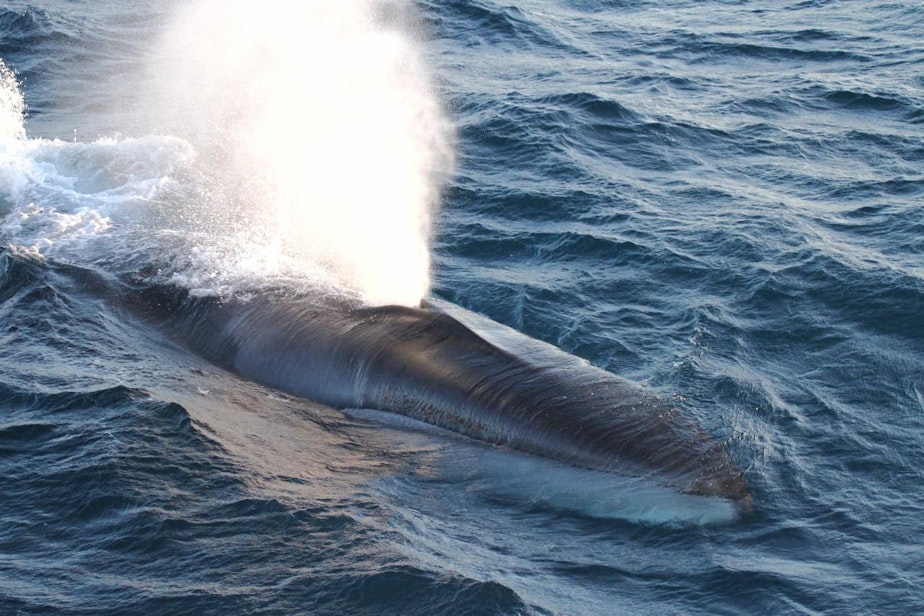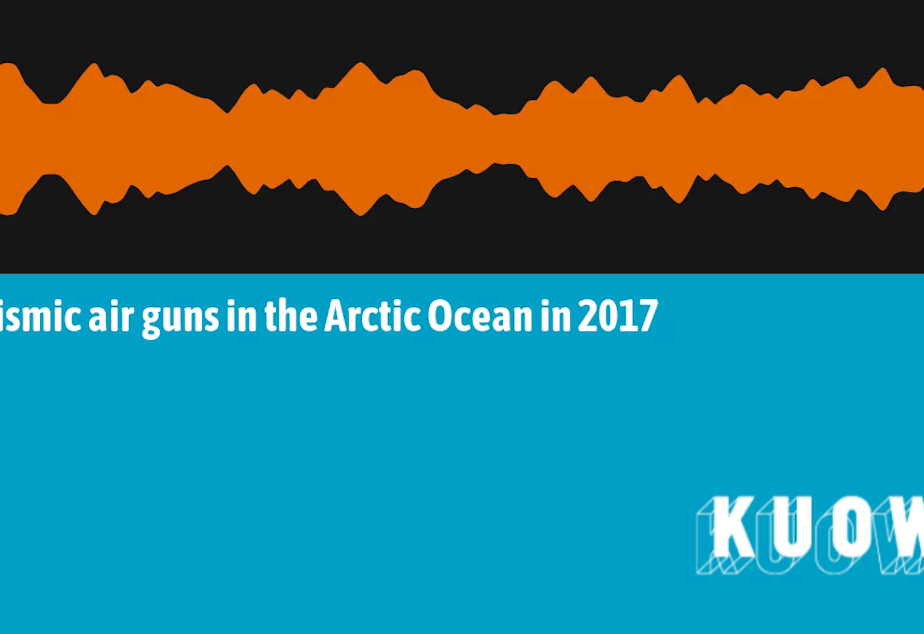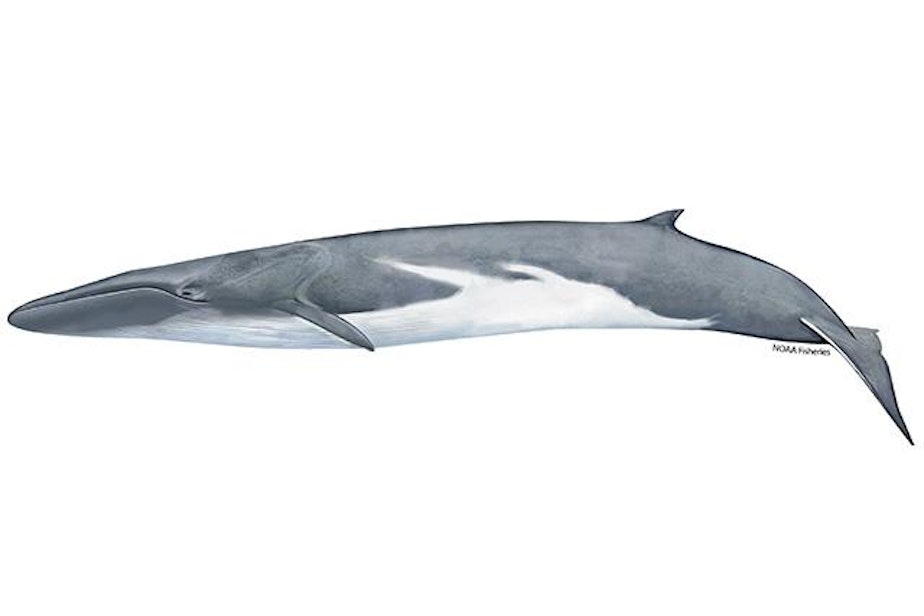LISTEN: Whale songs reveal map of Earth's crust

Scientists have used one of the loudest sounds in nature to map the Earth’s crust.
It’s the song of the fin whale.
Geologists at Oregon State University were studying earthquakes off the Oregon coast with a network of underwater seismometers, instruments that can detect even slight vibrations in the earth.
After leaving the devices on the deep ocean floor for a year, they retrieved them, then noticed tens of thousands of fin whale calls showing up in their recordings.
The booming songs can travel hundreds of miles underwater, where fellow whales and even seismometers can detect them.
“Fin whales have this persistent call, and they are really frequently traveling through our region,” said Oregon State University seismologist John Nabelek, coauthor of a new study of the whale songs in the journal Science.
“They are there all the time — and talking nonstop,” he said.
Sponsored
About 3,000 fin whales swim off the coasts of California, Oregon, and Washington, out of a global population of about 100,000, according to the National Oceanic and Atmospheric Administration.
At about 80 feet long, the endangered fin whale is the world’s second largest animal (only blue whales are larger).
Their deep calls, louder than a rock concert but at the low-frequency limit of human hearing, overlap with the rumblings of the shifting earth that seismologists study.
“They are in the band where we would like to record to detect earthquakes, and they are pretty strong,” Nabelek said. “We usually try to filter them out.”

 25 secs
Fin whale songs, sped up 10x to be more easily audible to human ears.
25 secs
Fin whale songs, sped up 10x to be more easily audible to human ears.
Sponsored
Lead author Vaclav Kuna, now at the Czech Academy of Sciences in Prague, and Nabelek figured out how to turn this noise into knowledge.
As the whale songs travel through the ocean, they also echo off the sea floor and the ocean’s surface. The sound even penetrates Earth’s crust, more than a mile beneath the ocean floor.
As the songs bounce and bend through different materials over different distances, they pick up clues to the places they’ve passed through.
With careful analysis of the whale calls and their complicated echoes, the researchers were able to map the thickness of Earth’s crust in an earthquake-prone area known as the Blanco Fracture Zone, about 100 miles west of Oregon’s Cape Blanco.

Sponsored
Seismologists and oil companies often explore underwater geology with a more invasive technique: Air guns that repeatedly blast sound waves through the ocean and into the earth’s crust.
“We are using the fin whales as [air] guns,” Nabelek said.
Much louder than whale songs, the air guns can harm marine life from plankton to whales. Fin whales sing less and flee when there’s seismic blastic in an area, biologists have found.
For years, U.S. environmental advocates have tried to stop the blasting for oil and gas exploration off the Atlantic coast.
Sponsored
“Yes, it's used for oil and gas, but it's also used for these really fundamental science questions,” said Jackie Caplan-Auerbach, a seismologist at Western Washington University.
She said strict rules govern the use of air guns for research to lessen potential impacts on sea life.
“We try very hard to balance our need for some of the scientific data with our need to protect the animals who live in this environment,” Caplan-Auerbach said. “The use of air guns is a very powerful tool for us because that sound can penetrate the subsurface, and the echoes tell us about what's underground.”

 1 min
Seismic airguns blasting about every 10 seconds in the Arctic Ocean in 2017, recorded off the coast of Alaska by University of Washington oceanographer Kate Stafford. She said the sounds had traveled at least 260 miles before being picked up by her underwater microphone.
1 min
Seismic airguns blasting about every 10 seconds in the Arctic Ocean in 2017, recorded off the coast of Alaska by University of Washington oceanographer Kate Stafford. She said the sounds had traveled at least 260 miles before being picked up by her underwater microphone.
Caplan-Auerbach, who was not involved in the whale song study, praised its innovation.
Sponsored
“What was really nice was the ability to take what most of us consider to be background noise, and make some geophysics out of it,” she said.
She said capitalizing on songs already bouncing around the ocean was ingenious and cheap, but less precise than firing seismic air guns toward the ocean floor.
“This is not likely to replace the traditional techniques that we use,” Caplan-Auerbach said.
Nabelek said whale song studies could be useful by providing glimpses into the ocean floor where air guns cannot be fired.
“These air gun studies are done in very few areas,” he said. “It's very hard to get [them] permitted.”
Nabelek said the songs of sperm whales, which sing at slightly higher frequencies than fin whales, could also help expand understanding of the bottom of the sea.
More broadly, Nabelek said he hoped the songs and sounds that other animals make might be used to learn more about the environments they live in, on land or under water.





